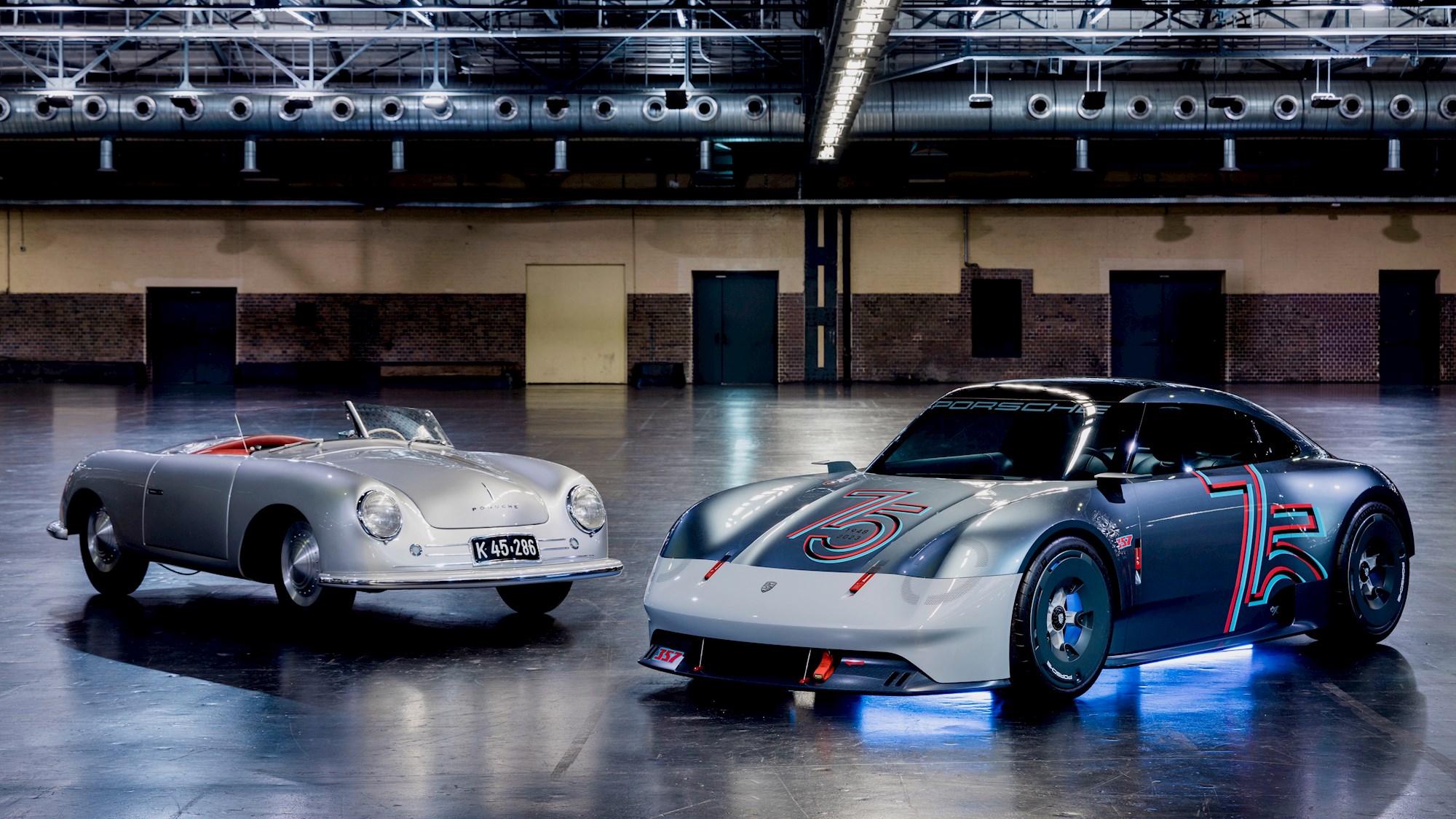Porsche has made itself an excellent 75th birthday present: a concept-car reboot of its first-ever production model, the 356 - which was launched on 8 June 1948.
The company says its Vision 357 is an interpretation of what a modern sports car designed by Ferry Porsche, creator of the 356, would look like; but "liberated from the regulations that apply for implementation as a series model".

“We created a very special birthday present in the form of the Porsche Vision 357, one which uses the 356 as a basis to underscore the significance of our design DNA,” says Michael Mauer, vice president of Style Porsche.
“The design study is an attempt to combine the past, present and future with coherency, featuring proportions that are reminiscent of its historical archetype and details that visualise the outlook for the future.”
It has strong bones in so many ways: built on the platform of the 368kW 718 Cayman GT4 RS. The narrow passenger cell with a sloping flyline and broad shoulders are supposed to evoke the lines of the 356.
Early 356s had a split windscreen with a bar down the middle. The split design was replaced in 1952 by a one-piece windscreen with a bend down the centre. The A-pillars of the Porsche Vision 357 are black and visually unite the side window surfaces into a single unit; the DLO (daylight opening) graphic is designed to resemble the visor of a helmet.

Another nod to the original is the grille pattern in the rear, in which the third brake light is integrated. Like all current Porsche models, the Vision 357 features a four-point light signet in front.
There are parallels in the paintwork: the two-tone finish with Ice Grey Metallic and Grivola Grey Metallic recalls the tones of the 1950s.
The 20-inch wheels are made of magnesium and equipped with aerodynamic carbon fibre hubcaps and centre locks. Visually, they recall a legendary Porsche wheel: the 356 A and 356 B with drum brakes had rims with the large bolt circle of 205 millimetres.

The "75" anniversary logo is on the doors and the front, like a racing number. More racing details: there’s nothing behind the lower area of the front wheels, which allows better ventilation of the wheel arches. The wrap-around, jointless front bonnet is fastened with quick-release mechanisms. Threaded rods stabilise the large front spoiler.
On the side sills, Porsche has used natural fibre-reinforced plastic (NFRP, made from flax). Instead of traditional exterior mirrors, the 357 is equipped with cameras on the edge of the roof. The visible tailpipe trim in the rear is made of a blueish-looking titanium, while the inside of the tailpipe is ceramic.
The 356 No. 1 Roadster was the very first car built by the Porsche brand: a two-seater with a multi-tubular frame and mid-engine. It went into production as a coupé with a different frame and rear-mounted engine, setting the template for future models.

After the first largely hand-built 356/2 models with an aluminium bodyshell, Porsche moved from Gmünd back to Stuttgart at the end of 1949. This is where series production of the Porsche 356 sports car began. The sheet-steel bodies were manufactured by Stuttgart-based Reutter bodyworks while engine production began in Zuffenhausen in space rented from Reutter, as Porsche Werk 1 was still occupied by the Allies.
About 78,000 356s were built by 1965. 356 (“pre-A”, 1948-1955), 356 A (1955-1959), 356 B (1959-1963) and 356 C (1963-1965) were available in a range of open- and closed-top body versions and various performance levels.















